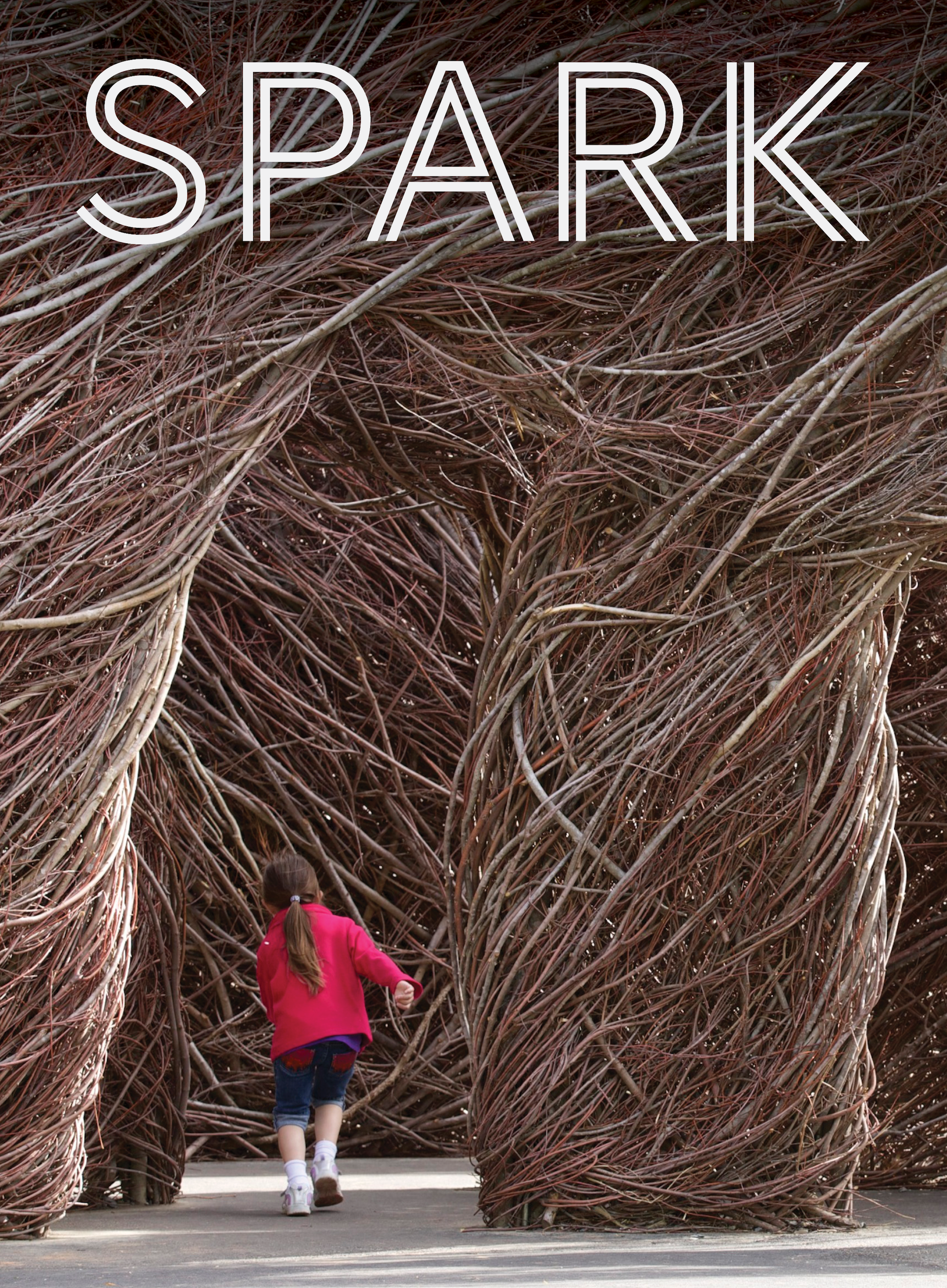Finding now

The natural art of Andy Goldsworthy and Patrick Dougherty
I find now, when I toss a stone into a river, witnessing the splash. I also find now, seeing the stone rivers created by artist Andy Goldsworthy. Goldsworthy collaborates with nature to create art. Using natural materials, he assembles works that are less, and more, impermanent. Thus, his art draws one’s attention to this present point – and also to its passing.
Goldsworthy designs stone walls that curve like rivers, and he fits together branches in flowing water. Sometimes, he adds sudden color with bright leaves, ones soon gone with the wind. Seeing his work encourages one to experience the moment, and also to ponder what is momentary. For me, it has been momentous.
If nature calls to you – with rocks and rivers, or perhaps by wind and tree – consider taking a journey of time, place and presence, via Goldsworthy’s art. His book, Wall: At Storm King, is a good way to delve into the beauty and temporality of Goldsworthy’s work. With an extensive array of photographs taken over four seasons, this volume shows a flowing stone wall he constructed along the Hudson River, and documents short-lived works around it. These pages also present Goldsworthy’s thoughts on his artistic process, in this particular place and with earlier works. As this rocky wall winds through many trees, it creates a dialogue between stone and wood, ultimately accentuating impermanence.
I immediately thought of Goldsworthy’s art when I encountered the work of Patrick Dougherty, another artist who works with materials found in nature. Dougherty is a sculptor who uses tree branches or saplings to build intricate structures. Like Goldsworthy, Dougherty creates art that is ephemeral, by its nature, and quite lovely to see. Dougherty’s work similarly directs one’s attention towards time and change, and viewing it reminds me to be present in this moment, to again find now.
With simple sticks, Dougherty weaves marvelous structures – ones that take my breath away and also return me to the breath. I was delighted to discover Dougherty while recently watching Craft in America: Nature, part of a documentary series by PBS that celebrates the American landscape and our relationship with the natural world. Dougherty is featured in this DVD for what he refers to as his “stickwork,” and watching it provides a fine welcome to his work.
Reading Dougherty’s monograph, Stickwork, leads to a more in-depth understanding of his art and process. This volume presents photographs of 38 sculptures created by Dougherty over 25 years, along with his own straightforward explanations of his work. Exploring his images and words, I was fascinated by his process: for each sculpture he creates, Dougherty pays close, careful attention to its place and its community. Indeed, local volunteers generally help Dougherty to prepare his stickwork, after he designs a sculpture which will belong to, and become a part of, its landscape. Dougherty’s sculptures are beautiful and playful, specific and temporary. As a result, they invite participation and presence – in nature, and in this moment and place.
After tossing a stone into water, I watch the ripples expanding. When I witness artwork by Andy Goldsworthy, my awareness expands, and I can sink peacefully into my connection with nature. Often while walking in the woods, I enjoy finding sticks, experiencing a simple yet deep abiding via the pieces of trees. I find a similar sense of pleasure and presence, when engaging with Dougherty’s art, momentary and joyful, of nature and now. ■
An earlier version of this article was posted on Anythink's blog in 2015.
 Don’t miss the upcoming “Stickwork” exhibition at the Denver Botanic Gardens Chatfield Farms location. This large-scale feature art installation by Patrick Dougherty includes sculptures created with sustainably harvested chokecherry saplings, woven into immersive architectural forms. “Stickwork” by Patrick Dougherty opens April 27, 2019, at Denver Botanic Gardens Chatfield Farms, located at 8500 W. Deer Creek Canyon Rd., Littleton, Colo., 80128. Visit botanicgardens.org or call 720-865-3500 for more information.
Don’t miss the upcoming “Stickwork” exhibition at the Denver Botanic Gardens Chatfield Farms location. This large-scale feature art installation by Patrick Dougherty includes sculptures created with sustainably harvested chokecherry saplings, woven into immersive architectural forms. “Stickwork” by Patrick Dougherty opens April 27, 2019, at Denver Botanic Gardens Chatfield Farms, located at 8500 W. Deer Creek Canyon Rd., Littleton, Colo., 80128. Visit botanicgardens.org or call 720-865-3500 for more information.
Send your questions or feedback to ithink@anythinklibraries.org or comment below.

